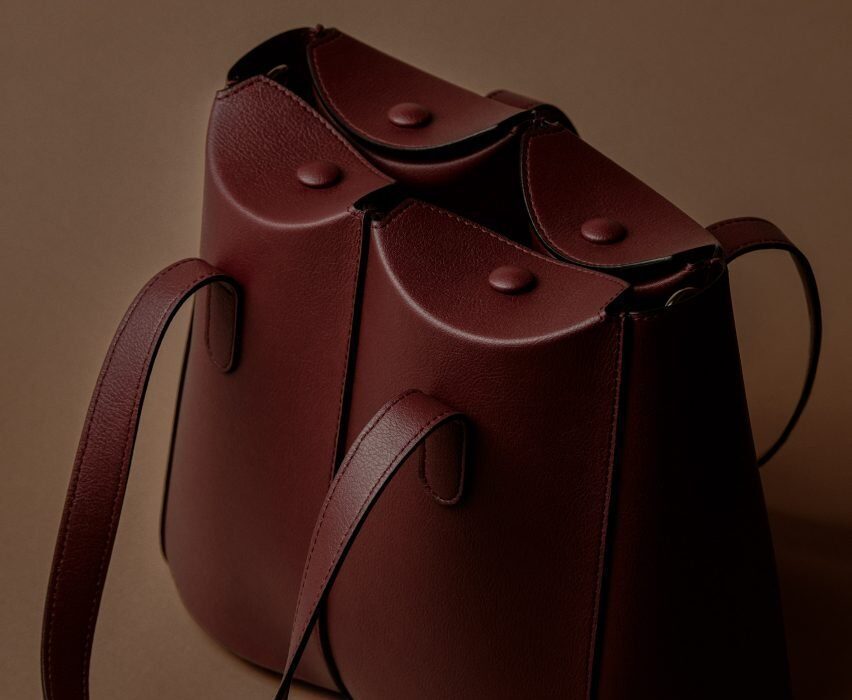Designer Luca Nichetto has made his first foray into fashion accessories with the Malala handbag, which was partially produced from apples for vegan leathergoods brand Angela Roi.
Malala is Angela Roi‘s first accessory made from apple leather, a fabric that is created using scraps such as peels and cores from apple processing that would otherwise go to waste.
However, while the Angela Roi website describes apple leather as an “entirely plant-based alternative to real leather”, the brand clarified to Dezeen that the material is a mix of apple-derived fibres and the petroleum-derived material polyurethane plastic that is commonly used for vegan leathergoods.
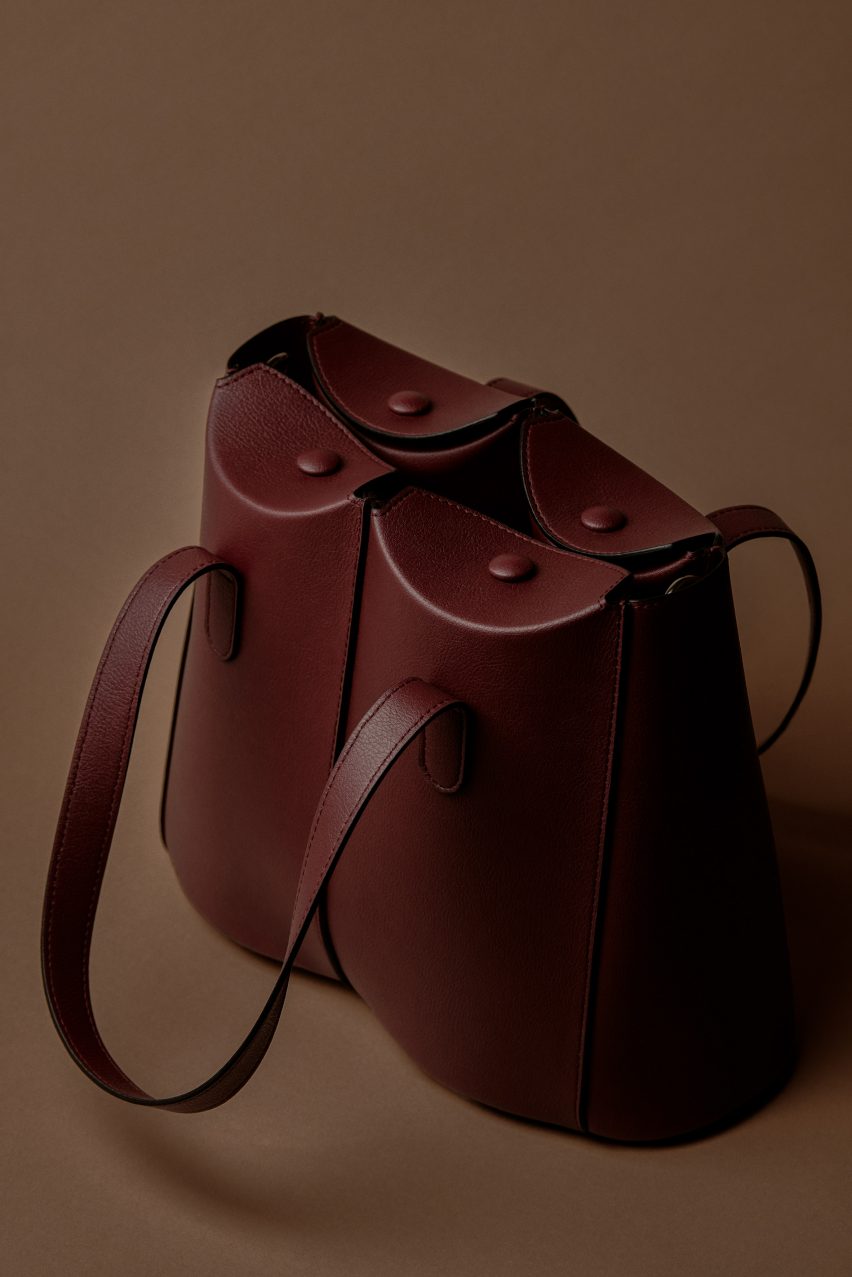
This apple-polyurethane blend is then applied on a mixed cotton-polyester backing material.
According to Nichetto Studio, the fabric retains both the feel and the look of leather, and will similarly change over time, developing a softer texture and natural sheen.
“I believe that considering the economic situation, the environmental challenges and this crisis in the world, design should try to find answers in the creation of objects that are durable and sustainable,” said Nichetto.
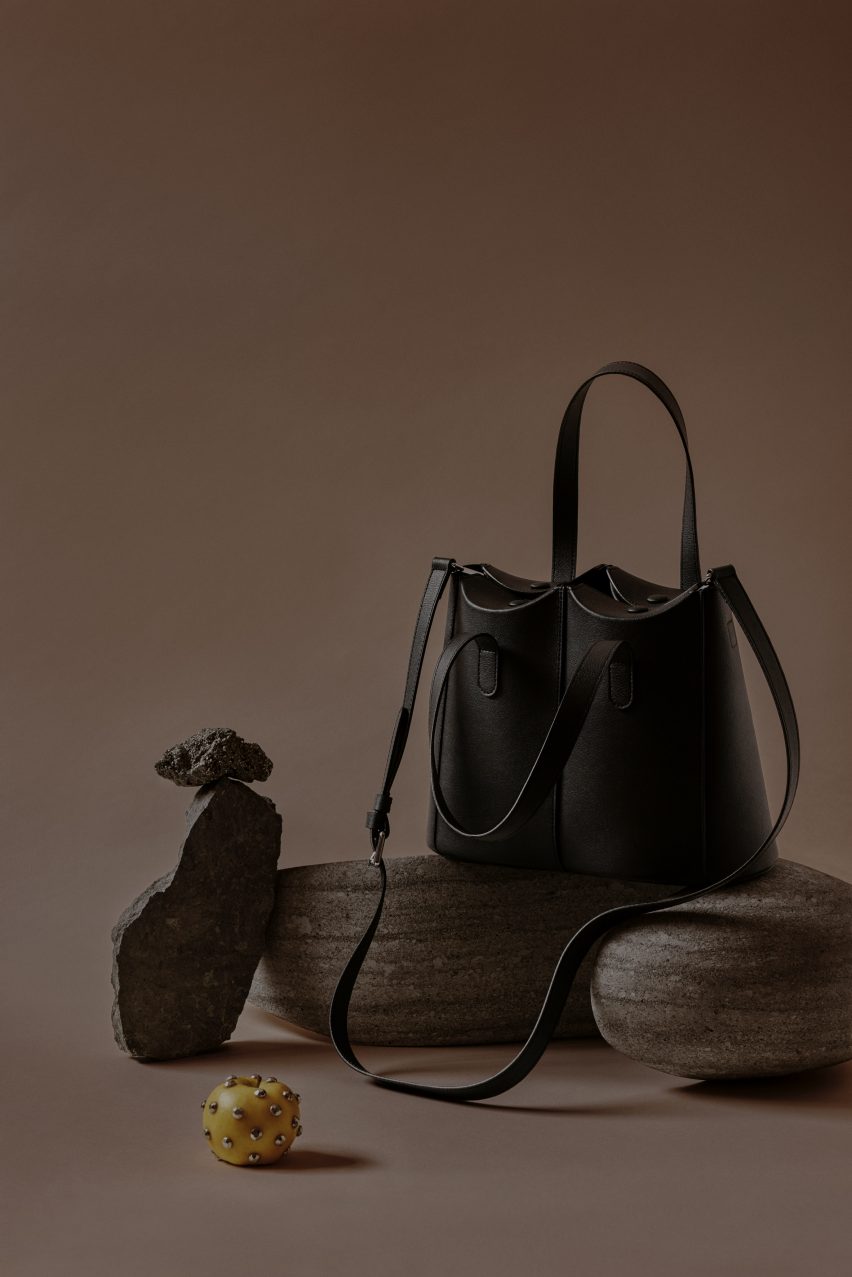
The bag was named after Pakistani education activist and Nobel Peace Prize laureate Malala Yousafzai and features a distinctive design with four functional pockets built into the top opening.
Its design was informed by the idea of a cabinet of curiosities or a traveller’s trunk with many compartments. At the same time, its shape references potato chip containers from fast food outlets, giving the bag what Nichetto Studio describes as a “pop soul”.
The Malala bag is cruelty-free, with no animals being involved in the production. The apple leather used for it comes from Italian company Pelletteria Fusella, which uses apple scraps from an orchard in the South Tyrol region.
The orchard’s apples are used for products such as juice and jams and produces an estimated 30,000 tonnes of scraps, such as cores and peels, every year that were either being sent to landfill or burnt.
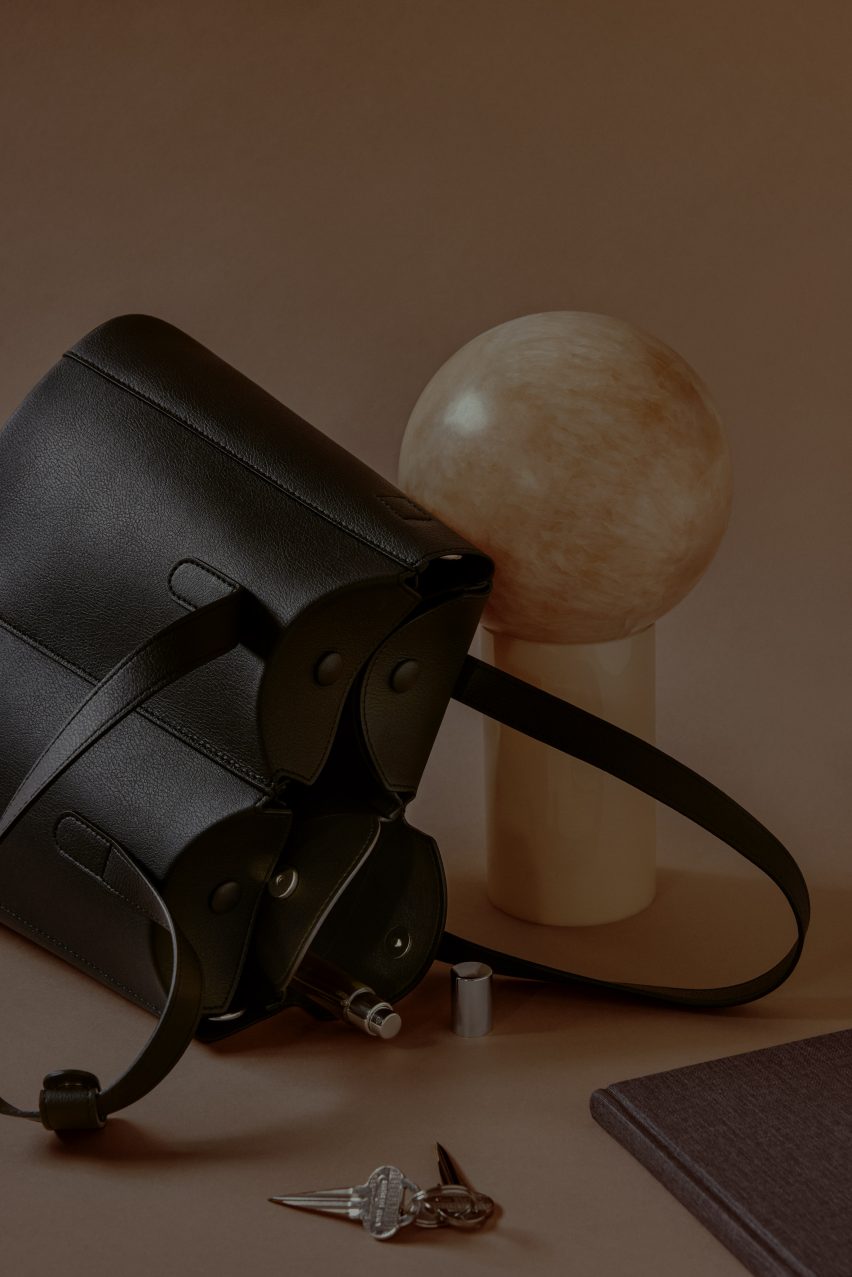
According to Angela Roi, by using a mix of plant- and petroleum-based materials, the brand can reduce the carbon emissions of polyurethane bag production while also delivering the durability that high-end consumers expect.
“As it currently stands, petroleum-based materials play a pivotal role in the durability of bio-based leathers because extending the life cycle of a product is an incredibly important aspect of sustainability,” said brand founder Angela Lee.
“The material’s potential for impact depends on the brand and consumer adoption, and a majority of consumers will not accept big sacrifices in quality compared to leather. We have not yet seen a completely plastic-free product that meets brand and consumer requirements for softness, strength and suppleness.”
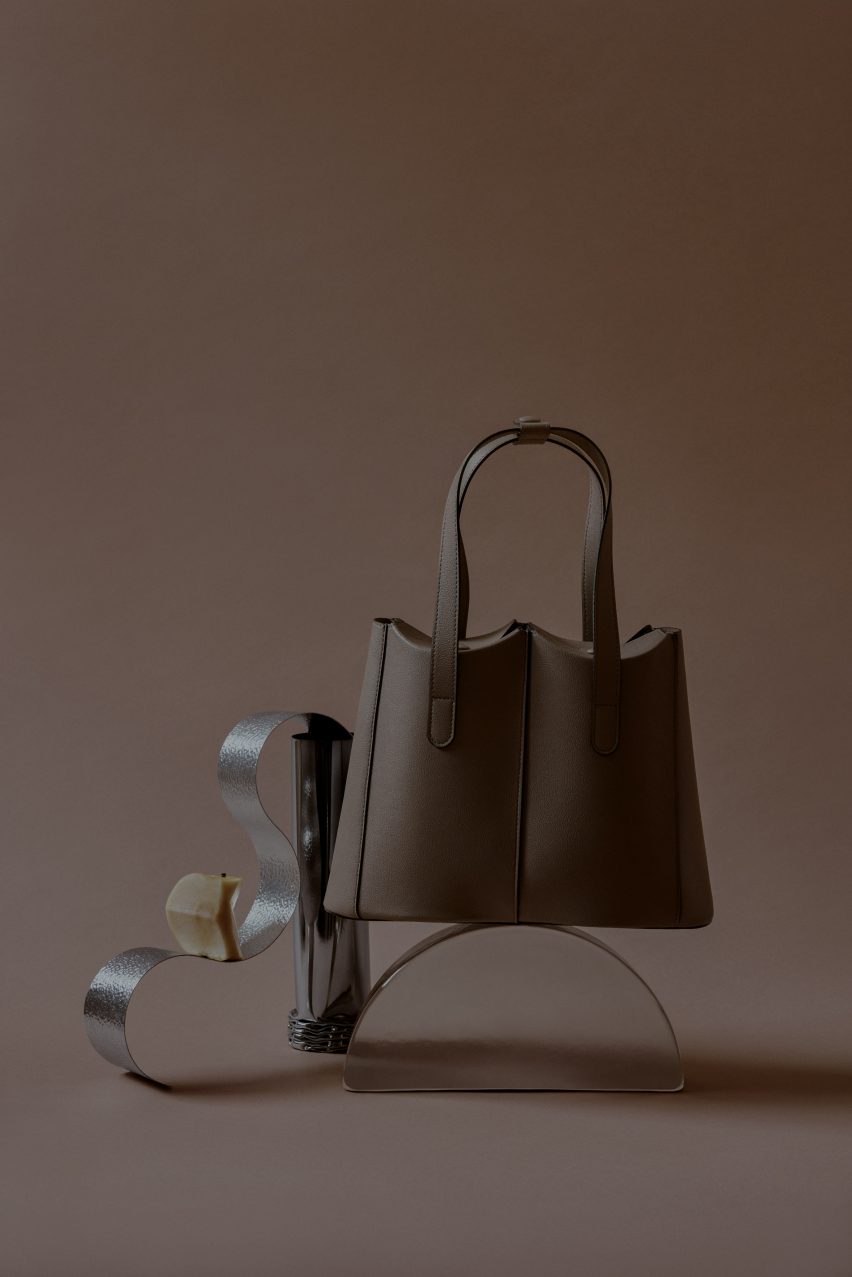
Lee says Angela Roi’s aim is to consistently look for better material options and eventually use one that is 100 per cent plastic-free and biodegradable as technology improves.
“Recently there has been the development of polyester yarns that are impregnated with enzymes that activate to degrade the polyester once placed in biodegradable conditions,” said Lee.
“There has also been a development of chemically engineered natural fibres that act like petroleum-based yarns. Both options are exciting and could be used as a backing material in the future.”
While many plant-based leather alternatives are now hitting the market, many still contain a plastic component, particularly as a coating, to ensure the kind of durability that is expected of consumer goods.
A similar apple leather comes from Dutch company Beyond Leather, whose Leap fabric is made by mixing the scraps with natural rubber and using a textile backing and thin plastic protective coating.

